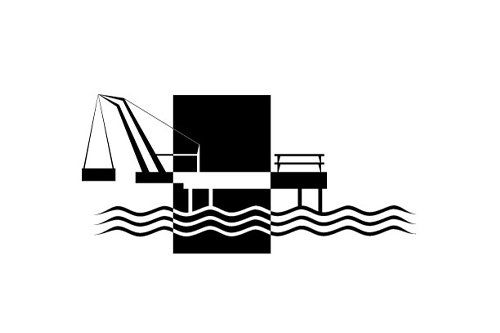
Construction Technology
Rig Building Shipyards
2007
Offshore rigs are vessels unlike any the world has ever known. To be able to build these behemoths and make them seaworthy requires unusual vision, determination and ingenuity. A few shipyards rose to the challenge. Alexander Shipyard, of New Orleans, built the first self-contained, mobile offshore drilling unit (MODU), the Breton Rig 20 in 1949, following an idea developed by John Hayward.
Requiring considerable coordination between the shipbuilders and the drilling contractors, various designs were built in yards along the Gulf Coast. However, the work required the shipyards to make considerable modifications to their engineering and construction practices. Only a few were successful. By 1972, six Gulf Coast yards, Alexander and Avondale, of New Orleans, LA; Bethlehem, of Beaumont, TX; Ingalls, in Pascagoula, MS; LeTourneau, of Vicksburg, MS; and Levingston, in Orange, TX, had built a total of 104 MODUs, a remarkable achievement. Bethlehem developed a unique jackup design that includes our own Ocean Star Offshore Drilling Rig & Museum. Letourneau is still producing jackup rigs of its own design today.
Two Singapore shipyards, Keppel FELS and PPL, started building offshore rigs in the early 70s. Today, they have emerged as modern pioneers, leaders in researching and designing rigs for deeper waters and severe operational environments.
Recognizing the pioneering efforts of the following individuals and companies who contributed to the development of this technology:
Alexander Shipyard (now Bollinger Gulf Repair), Avondale Shipyard (now Northrup Grumman Ship Systems), Bethlehem Shipyard, Ingalls Shipbuilding (now Northrup Grumman Ship Systems), Keppel Offshore & Marine, LeTourneau Inc. (now LeTourneau Technologies, Inc.), Levingston Shipbuilding Company, PPL Shipyard Pte Ltd.
Underwater Hydraulic Pile Drivers
2013
The early years of offshore installations were enabled by the extension of many onshore technologies. Such was the case in driving piles with steam hammers during the installation of offshore production platforms. Since the pile driver was located on the surface, piles had to have additional length to reach from the top of the jacket to the ocean floor. In many cases this extra length was not part of the structural component - simply an “add on” (often called a “follower”) to bridge the gap between the surface and the top of pile underwater. The "follower” length was limited by the working distance under the barge crane and the weight of the hammer assembly, both of which created extra handling problems and bending stress on the pile body.
As long as water depths and jacket heights were limited, these disadvantages were outweighed by the years of experience that came with driving “from the top”. However, as projected water depths for platforms began to approach 1000 feet, it became obvious that underwater driving would be the long-term solution. Today, hydraulic pile drivers are capable of driving piles in water depths up to 10,000 ft. The center for underwater hammer development was the in the North Sea, with significant efforts by Menck GmbH, HBM and later IHC Hydrohammer b.v.
Interestingly, the first actual usage was in the Gulf of Mexico in 1977, on Shell's Cognac platform. This was followed closely by several jobs in the North Sea, and by 1987 over 600 piles had been driven by underwater pile drivers. Today, massive pile drivers with over 2½ million ft-pounds of net energy output are available, and piles of varying diameter have been driven over 600 feet into the seafloor in installations worldwide.
The underwater pile driver was literally a game changer in the ability to install foundations in deepwater. Because of its efficiency in energy transfer, and the fact that “followers” were not needed thus considerably reducing the handling issues, underwater hydraulic pile drivers have also been used extensively in shallower water.
Underwater hydraulic pile drivers provide a robust and versatile method for installing driven piles for offshore developments. They have been used to install the foundations for fixed platforms in both deep and shallower water, and the foundations for a range of floating production systems including TLPs and SPARS, as well as FPSOs and FLNGs, along with a variety of subsea infrastructures in shallow to ultra-deepwaters. Recent developments have seen the pile driving equipment installing drilling conductors in water depths beyond 7,200 ft, saving significant rig time and increasing the overall level of safety and efficiency on the job.
Recognizing the pioneering efforts of the organizations that pioneered this technology:
IHC Hydrohammer b.v. (Marwede Group), Menck GmbH
Early Development of Suction Piles
2015
Suction piles were introduced in the late 1970’s and early 1980’s as a competitive alternative to less-successful permanent mooring systems. After several experiments, small-scale tests led to full scale open-sea tests.
The first 30 of several hundred suction piles were installed offshore Congo and in the North Sea in 1995. Beginning in the late 1990’s, the concept was expanded to deep-water mooring systems for drilling rigs.
A significant result is that an entire service industry has been established for the design and installation of suction piles and anchorages, with major Norwegian and USA companies involved. Suction anchor piles provide a cost-efficient alternative for catenary, taut leg and tension leg moorings, compared to conventional piles or drag embedded anchors. This award recognizes the extremely important early pioneering development stage of suction pile technology which resulted in continued significant improvements in design, installation and effectiveness.
Recognizing the pioneering efforts of the following individuals and organizations that contributed to this technology:
Knut H. Andersen, Dr. Rune Dyvik, Asle Eide, Jan R. Hogervorst, Per Sparrevik, and Tor Inge Tjelta
Norwegian Geotechnical Institute, Shell, and Statoil
Polyester Deepwater Mooring Systems
2016
The use of polyester cables for deepwater mooring started in the 1980s by Marlow Ropes, a UK Company. Petrobras began installing polyester mooring systems immediately, leading to the P-19 and P-26 installations. Another program, set out to qualify advanced polyesters with standard polyester as a base case. The superior performance of standard polyester proved it to be the best solution at lowest cost. Leading the way were BP and Shell. BP installed the system on its Mad Dog platform and Kerr McGee equipped the first cell-spar, Red Hawk.
Recognizing the pioneering efforts of the following individuals and organizations that contributed to this technology:
Ray Ayers Ph. D., Steven Banfield, Luis Claudio Sousa Costa, Cesar Del Vecchio, Paul Devlin, Felix Dyhrkopp, John Flory, Jenifer Tule Ham, John W. S. Hearle Ph. D., Mike Parsey, David Petruska, Hongbo Shu, Richard Snell, Richard W. P. Stonor Ph. D.,Sim Whitehill, and Mitch Winkler BP, BSEE, Chevron, DeepStar, Kerr McGee (now Anadarko), Marlow, Noble Denton (now DNV GL), Petrobras, RPSEA, Shell, Stress Engineering, Tension Technology Inc., and Whitehill Manufacturing Company




